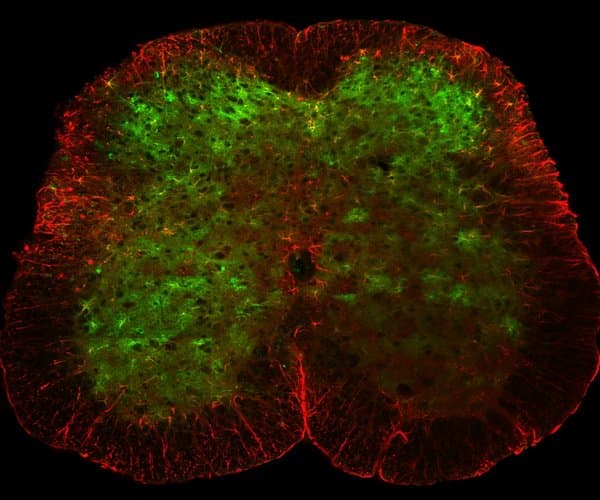New Ultra Small Microscope To Shed Light On The Activities Of Cells In The Spinal Cord
Miniaturized microscopes can now peek through the tiny cells and monitor mysterious activities taking place in the spinal cord. The invention played the role of an activity tracker and discovered astrocytes cells in the nervous system, which were previously deemed insignificant, but now exhibit a peculiar behaviour to intense sensation. Researchers from the Salk Institute call it the next big invention to contribute in neural medication and lesions treatments such as neurodegenerative diseases eg: amyotrophic lateral sclerosis (ALS).
Scientists revealed that the spinal cord is an integrated part of a vertebrates’ neural biology and is responsible for crucial activities related to reflexes and response. Surprisingly, it works individually from time to time. For example, our hands recoil from touching any hot substance, though the real sensation has not been completely fed to the system. Although, the outputs were known but their work procedure was still an unsolved puzzle.

involvement of cells called astrocytes in spinal sensory processing
Axel Nimmerjahn, an assistant professor in Salk's Waitt Advanced Biophotonics Center, at first improved the mini microscopes they had started using in 2008. The customized instrument was upgraded to a new level in terms of hardware and software, which now allows the device to track internal cellular activities of fully awake mice.
Kohei Sekiguchi, a Salk researcher and a PhD student from the University of California at San Diego explained that they had realized an activity pattern in the awake animal for the first time. The research however faced different challenges due to the structure and the location of the spinal cord near the heart and lungs. Further advancements in computation and process, negated the ill effects.
The team reported that they found the spinal sensory neurons sensitive to light, touch or pressure and that they respond depending on the level of intensity. They understood that the secondary supportive astrocytes cells reciprocate the intense stimuli and are coordinated using their very own chemical signals. In the near future, the team would like to test the results from spinal cord reactions, corresponding to touch or pain. The complete research report was published in the Nature Communication journal.
Watch new insights to pain sensation:
Source: <a href="https://www.salk.edu/news-release/tiny-microscopes-reveal-hidden-role-of-nervous-system-cells/" target="_blank" rel="nofollow noopener noreferrer">Tiny microscopes reveal hidden role of nervous system cells - Salk Institute for Biological Studies</a>
Scientists revealed that the spinal cord is an integrated part of a vertebrates’ neural biology and is responsible for crucial activities related to reflexes and response. Surprisingly, it works individually from time to time. For example, our hands recoil from touching any hot substance, though the real sensation has not been completely fed to the system. Although, the outputs were known but their work procedure was still an unsolved puzzle.

involvement of cells called astrocytes in spinal sensory processing
Axel Nimmerjahn, an assistant professor in Salk's Waitt Advanced Biophotonics Center, at first improved the mini microscopes they had started using in 2008. The customized instrument was upgraded to a new level in terms of hardware and software, which now allows the device to track internal cellular activities of fully awake mice.
Kohei Sekiguchi, a Salk researcher and a PhD student from the University of California at San Diego explained that they had realized an activity pattern in the awake animal for the first time. The research however faced different challenges due to the structure and the location of the spinal cord near the heart and lungs. Further advancements in computation and process, negated the ill effects.
The team reported that they found the spinal sensory neurons sensitive to light, touch or pressure and that they respond depending on the level of intensity. They understood that the secondary supportive astrocytes cells reciprocate the intense stimuli and are coordinated using their very own chemical signals. In the near future, the team would like to test the results from spinal cord reactions, corresponding to touch or pain. The complete research report was published in the Nature Communication journal.
Watch new insights to pain sensation:
Source: <a href="https://www.salk.edu/news-release/tiny-microscopes-reveal-hidden-role-of-nervous-system-cells/" target="_blank" rel="nofollow noopener noreferrer">Tiny microscopes reveal hidden role of nervous system cells - Salk Institute for Biological Studies</a>
0
